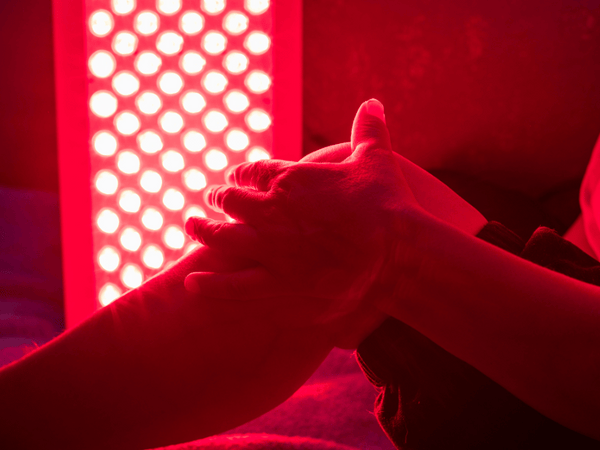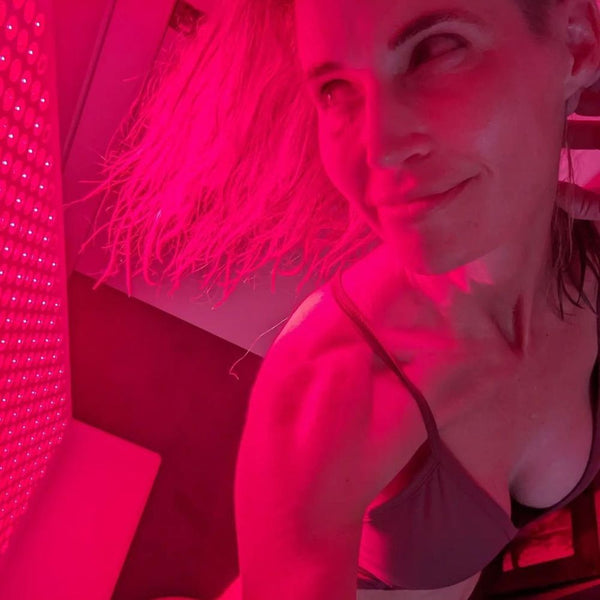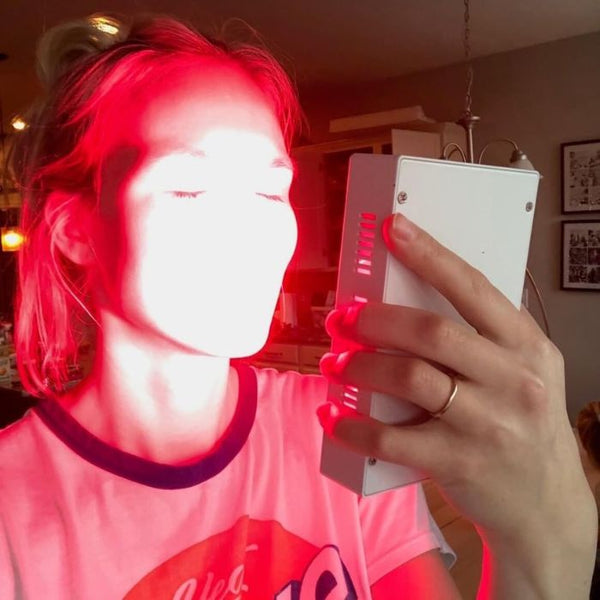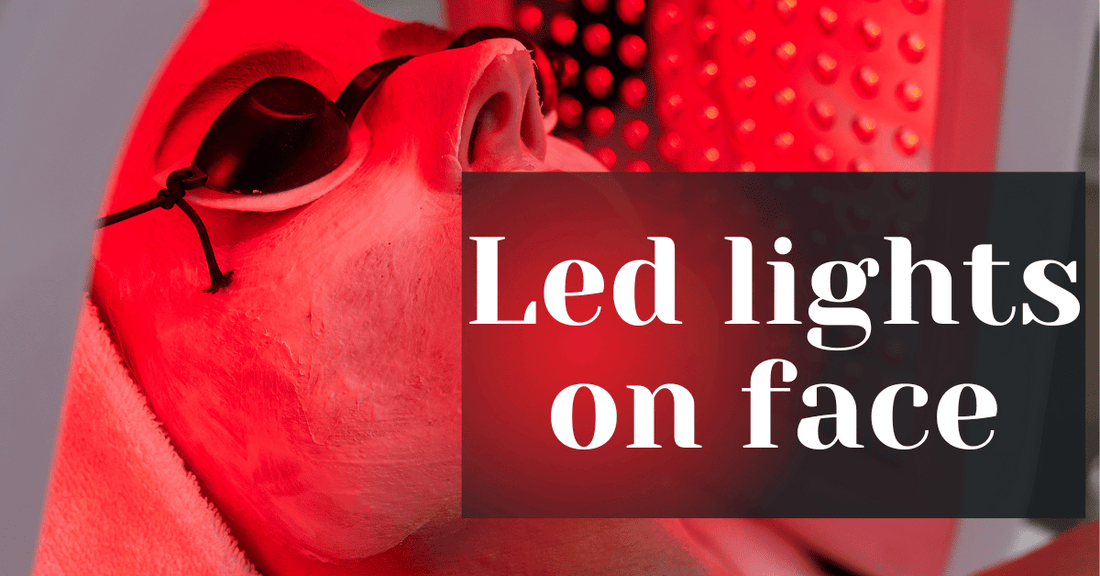
Led lights on face
In the realm of skincare and beauty, technology plays an increasingly pivotal role in enabling individuals to achieve their desired aesthetic outcomes. Among the myriad of innovations, LED light therapy stands out as a non-invasive marvel, harnessing the power of the visible light spectrum to foster facial rejuvenation and address a spectrum of skin woes. This guide embarks on a journey to explore the multifaceted world of LED light therapy devices and lights on face, delving into their mechanisms, benefits, and practical applications to unveil how it can illuminate the path to radiant, healthy skin.
What are LED lights on face?
LED light therapy, a cornerstone in modern skincare, leverages light-emitting diodes (LEDs) to emit varying wavelengths of light onto the skin. Unlike UV rays, these gentle yet potent LED lights penetrate the skin's layers, and target the oil glands located in the deeper layers of skin to instigate a series of therapeutic effects without causing harm.
The magic of LED therapy lies in its color spectrum, with each hue addressing distinct skin issues.
-
Red Light: Revered for its anti-aging prowess, red light stimulates collagen production, diminishing wrinkles and enhancing skin firmness. can help stimulate hair growth for those with male- or female-pattern hair loss.
-
Blue Lights: A bane for acne-causing bacteria, blue light mitigates breakouts and soothes inflammation.
-
Green Light: Known for its calming effects, green light targets pigmentation, reduce fine lines and reduces the appearance of dark spots and uneven skin tone.
-
Yellow Light: This cheerful hue rejuvenates the skin, aiding in detoxification and boosting overall radiance.
The Science Behind LED Light Therapy
At the heart of LED light therapy for skin cells is a fascinating interplay between visible light spectrum and biology. When LED lights penetrate the skin, they trigger photobiomodulation, a process wherein light photons are absorbed by cellular photoreceptors. This absorption sets off a cascade of cellular events that can lead to various therapeutic outcomes in skin cells.
Clinical studies have substantiated scientific evidence for the efficacy of red LED light therapy to manage and treat acne itself. For instance, a study published in the Journal of Clinical and Aesthetic Dermatology demonstrated that red LED light to treat acne significantly improved skin complexion and increased collagen density, contributing to a more youthful appearance.
The beauty of LED light therapy lies in its precision. Each wavelength corresponds to different wavelengths, to different depths, with different wavelengths, with a specific depth of skin penetration, allowing for targeted skin treatment with:
-
Red Light (630-700 nm): reaches the dermis, where it stimulates collagen production and enhances blood circulation.
-
Blue Light (400-490 nm): Primarily targets the epidermis, making it effective against acne-causing bacteria.
-
Green Light (520-570 nm): penetrates shallowly, making it ideal for addressing hyperpigmentation and soothing the skin.
-
Yellow Light (570-590 nm): affects the superficial layers, aiding in detoxification and skin rejuvenation.
Benefits of Using LED Lights on Face
The allure of LED light therapy lies in its multitude of benefits, making it a versatile tool in the skincare arsenal. Here are some of the key advantages of incorporating LED lights into your facial care routine:
1. Stimulates collagen production:

Red light therapy is particularly renowned for its ability to increase blood circulation and boost collagen synthesis, leading to firmer, plumper skin and a reduction in fine lines and wrinkles.
2. Combats Acne:
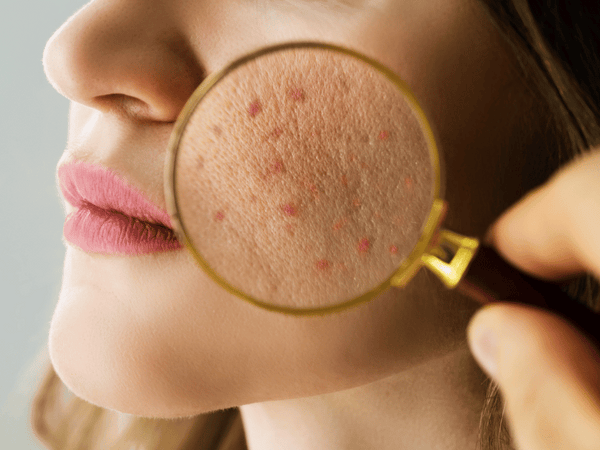
Blue light possesses antibacterial properties, targeting acne-causing bacteria and reducing inflammation, thereby promoting clearer, blemish-free skin.
3. Even Skin Tone:
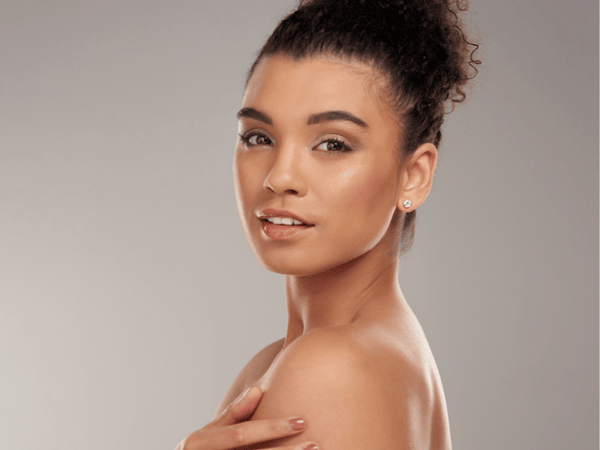
Green light therapy is effective in diminishing hyperpigmentation, including sunspots and age spots, resulting in a more even and radiant complexion.
4. Enhances wound healing:
LED lights, especially red and infrared light, can accelerate the skin's natural ability to heal wounds and the wound healing process itself, making it beneficial for post-procedure recovery time or calming irritated skin.
5. Improves Texture: Regular use of blue LED light for therapy can lead to smoother, softer skin by promoting healthy cell turnover and rejuvenation.
6. Non-Invasive and Safe:
LED lights offer a gentle alternative to more invasive procedures with minimal risk of side effects, making them suitable for all skin types and tones.
7. Convenient and accessible:
With the availability of at-home LED devices, individuals can enjoy the benefits of light therapy in the comfort of their own homes, fitting seamlessly into their skincare routines.
|
LED Light Color |
Primary Benefit |
Additional Benefits |
|
Red |
Anti-aging, collagen production |
Wound healing, reduced inflammation |
|
Blue |
Acne treatment, antibacterial |
Calming effect on the skin |
|
Green |
Pigmentation reduction, skin tone, evening |
Soothing, reduces redness |
|
Yellow |
Detoxification, skin rejuvenation |
Enhances lymphatic flow, reduces swelling |
Types of LED Light Therapy devices
LED light therapy has evolved into two primary modalities, each designed to cater to different needs and preferences: at-home devices and professional treatments. Understanding the nuances between these options can empower users to make informed decisions that align with their skincare goals and lifestyle.
At-Home Devices:
- Overview: compact, user-friendly gadgets that allow individuals to enjoy the benefits of LED light therapy from the comfort of their homes. These devices range from handheld units to full-face light masks themselves.
Pros:
-
Convenience: It enables regular treatment on your schedule without the need for appointments.
-
Cost-effectiveness: A one-time purchase is often less expensive than multiple professional sessions.
-
Privacy: Perfect for those who prefer to conduct their skincare routines in private.
Cons:
-
Lower Intensity: Typically, these devices operate at a lower power than professional systems, which may result in longer times to see visible results.
-
Limited Coverage: Some devices might not cover the entire face or target specific areas as effectively as professional equipment.
Professional Treatments:
- Overview: High-grade LED therapy is performed in a clinical setting by skincare professionals. These treatments use advanced, powerful devices to deliver precise wavelengths of visible light.
Pros:
-
Higher Efficacy: Professional machines often offer more potent light exposure, potentially providing faster and more pronounced results.
-
Customization: Skincare professionals can tailor treatments to specific skin concerns, adjusting the light type, intensity, and duration as needed.
-
Comprehensive Coverage: Professional equipment is designed to treat the entire face evenly and can also be used on other parts of the body.
Cons:
-
Cost: Professional sessions can be expensive, especially since multiple sessions are usually required for optimal results.
-
Time Commitment: Requires visiting a clinic or spa, which may not be convenient for everyone.
Introducing KOZE™ Mini
The KOZE Mini is a rechargeable, handheld Red Light Therapy device. Portable, lightweight, and small enough to travel anywhere. Enhance skin tone and mental health while alleviating aches and pains. Light therapy can be used anywhere and at any time. Includes a hard-shell Koze travel case to keep your Mini safe on the go. Add the new KOZE Mini Stand.
How to Choose the Right LED Light for Your Skin Concerns
Selecting the appropriate LED light for your specific skin concerns is crucial to achieving optimal results. Here are some guidelines to help you navigate your choices:
1. Identify Your Primary Skin Concern: Begin by pinpointing the main issue or multiple skin concerns you want to address. Is it acne, wrinkles, hyperpigmentation, or overall skin rejuvenation? Each concern correlates with a specific light color:
-
Acne: blue light for its antibacterial properties.
-
Aging: red light for collagen production and wrinkle reduction.
-
Pigmentation: green light for evening out skin tone.
-
Rejuvenation: yellow light for detoxification and radiance.
2. Consider Your Skin Type: If you have sensitive skin, start with shorter treatment durations and lower intensity settings. Monitor your skin's reaction and adjust accordingly.
3. Research Device Options: For at-home use, look for devices with proven efficacy and positive reviews. Professional treatments, on the other hand, offer higher intensity and should be performed by qualified skincare professionals.
4. Consult a Dermatologist: It's always wise to seek advice on skin aging, from a dermatologist's office, especially if you have underlying skin conditions. They can provide personalized recommendations based on your skin's needs.
Step-by-Step Guide to Using LED Lights on Face at Home
Incorporating your LED light therapy devices into your own at home treatments and skincare routine can be a game-changer for your complexion. Here's a step-by-step guide to ensure you get the most out of your LED lights on face treatment:
1. Cleanse Your Skin: Begin with a clean slate. Remove makeup, dirt, and oil with a gentle cleanser to ensure the LED light can penetrate your skin effectively.
2. Prep Your Skin: For enhanced results, apply a serum that complements your skin concern. For example, use a hyaluronic acid serum for hydration or a vitamin C serum for brightening.
3. Set Up Your Device: Follow the manufacturer's instructions to set up your LED light therapy device. Ensure it's charged or plugged in, and select the appropriate light setting for your skin concern.
4. Protect Your Eyes: If your device doesn't come with built-in eye protection, wear safety goggles or sunglasses to shield your eyes from the bright light.
5. Start the treatment: Place the device on your face, ensuring it covers the targeted area. Relax, and let the light do its work. Treatment times typically range from 10 to 30 minutes, depending on the device and intensity level.
6. Post-Treatment Care: After the session, apply a moisturizer to soothe and hydrate your skin. If you used a serum earlier, this is a great time to lock in its benefits.
7. Consistency is key: For best results, use your LED light therapy device according to the recommended frequency, usually several times a week.
8. Monitor Your Skin: Pay attention to how your skin responds to the skin treatment itself. If you experience any discomfort or adverse reactions to skin treatments, reduce the frequency of in-office treatments or consult with a dermatologist.
Potential Side Effects and How to Avoid Them
While LED light therapy is generally considered safe for most people, it's essential to be aware of potential side effects and how to minimize them. Here are some common concerns and tips for prevention:
1. Eye Strain or Discomfort: The brightness of LED lights can cause temporary eye strain, especially for sensitive individuals. To avoid this, always use protective eyewear or close your eyes during your treatment sessions.
2. Mild Redness: Some people may experience slight redness immediately after skin treatment, however. This is usually temporary and should subside within a few hours. If you have sensitive skin, start with shorter sessions and gradually increase the duration of maintenance treatments.
3. Dryness: LED light therapy can sometimes lead to skin dryness. To combat this, apply a hydrating moisturizer immediately after your session and ensure you're drinking plenty of water to stay hydrated.
4. Photosensitivity: Certain medications and skincare products can increase your skin's sensitivity to light. If you're using photosensitizing agents, like retinoids or certain antibiotics, consult your dermatologist before starting LED light therapy.
5. Avoid overuse: Stick to the recommended usage guidelines provided in office treatments or by the device manufacturer. Overuse can potentially lead to skin irritation or reduce the effectiveness of the treatment.
Reminder: By being mindful of these potential side effects and following best practices, you can enjoy the benefits of LED light therapy while keeping your skin safe and comfortable. If you experience any severe or serious skin damage or persistent adverse reactions to other treatments, discontinue use and consult a healthcare professional.
Frequently Asked Questions About LED Lights on Face
Q1: How often should I use LED light for therapy on my face?
A1: The frequency depends on the specific device and your skin concerns. Generally, it's recommended to use at-home LED light therapy 2-3 times a week for 10–30 minutes per session. For professional treatments, follow your skincare provider's advice.
Q2: Can I use LED light therapy if I have acne-prone or inflammatory skin conditions?
A2: Yes, LED light is particularly beneficial for acne-prone skin as it helps to kill acne-causing bacteria and reduce inflammation.
Q3: Is LED light therapy a generally safe, during pregnancy?
A3: While LED light therapy is generally considered safe, it's always best to consult with your healthcare provider before starting any new treatment during pregnancy.
Q4: Can blue LED lights on the face help with rosacea?
A4: Red LED light therapy can be helpful for rosacea as it reduces inflammation and redness. However, individual responses may vary, so it's important to monitor your skin's reaction.
Q5: How long does it take to see results from LED light therapy?
A5: Results can vary depending on the individual and the condition being treated. Some people may notice improvements in their office within a few weeks of professional treatment, while others may take a couple of months to see significant changes.
Q6: Can I use skincare products before or after LED light therapy?
A6: It's best to use LED light therapy on clean skin. You can apply serums or moisturizers after the treatment to enhance the benefits and hydrate your skin.
Q7: Are there any skin types that should avoid LED light therapy?
A7: People with photosensitive skin conditions, such as lupus, should avoid LED light therapy. It's always best to consult with a dermatologist if you have any concerns about your skin type and compatibility with LED light therapy.
Conclusion
LED light therapy has emerged as a revolutionary tool in the realm of skincare, offering a non-invasive, painless solution to a variety of skin concerns. From combating acne and inflammation with blue, red LED light devices and therapies to promoting collagen production and reducing wrinkles with red and other LED light devices and light therapies alone, the versatility of light-emitting diode lights on the face is truly remarkable.
As we've explored in this comprehensive guide, the key to maximizing the benefits of at-home LED light and therapy lies in understanding the science behind it, choosing the right type of laser therapy used for your skin concerns, and following a proper routine for your at-home device use. It's essential to listen to your skin and adjust your treatments accordingly, always prioritizing safety and efficacy.
In conclusion, whether you're looking to address specific skin issues or simply enhance your overall skin health, incorporating LED lights on your face into your skincare regimen can be a game-changer. Embrace the light, and let your skin's natural beauty shine through.
References
1. Wunsch, A., & Matuschka, K. (2014). A Controlled Trial to Determine the Efficacy of Red and Near-Infrared Light Treatment in Patient Satisfaction, Reduction of Fine Lines, Wrinkles, Skin Roughness, and Intradermal Collagen Density Increase. Photomedicine and Laser Surgery, 32(2), 93-100. https://doi.org/10.1089/pho.2013.3616
2. Gold, M. H., Andriessen, A., Biron, J., & Andriessen, H. (2009). Clinical Efficacy of Self-applied Blue Light Therapy for Mild-to-Moderate Facial Acne. Journal of Clinical and Aesthetic Dermatology, 2(3), 44-50. https://www.ncbi.nlm.nih.gov/pmc/articles/PMC2923954/
3. Avci P., Gupta, A., Sadasivam, M., Vecchio, D., Pam, Z., Pam, N., & Hamblin, M. R. (2013). Low-level laser (light) therapy (LLLT) in skin cancer: Stimulating, wound healing, restoring. Seminars in Cutaneous Medicine and Surgery, 32(1), 41-52. https://www.ncbi.nlm.nih.gov/pmc/articles/PMC4126803/
4. Sadick, N. S. (2008). Handheld LED array device in the treatment of acne vulgaris. Journal of Drugs in Dermatology, 7(4), 347-350. https://jddonline.com/articles/dermatology/S1545961608P0347X
5. Lee, S. Y., Park, K. H., Choi, J. W., Kwon, J. K., Lee, D. R., Shin, M. S., Lee, J. S., You, C. E., & Park, M. Y. (2007). A prospective, randomized, placebo-controlled, double-blinded, and split-face clinical study on LED phototherapy for skin rejuvenation: Clinical, profilometric, histologic, ultrastructural, and biochemical evaluations and comparison of three different treatment settings. Journal of Photochemistry and Photobiology B: Biology, 88(1), 51-67. https://doi.org/10.1016/j.jphotobiol.2007.04.008
